Costa Rica (1/25-2/1) and Volcan Irazu - 1/30/2007
Costa Rica
Green canopies, beans and rice, jungle, volcanoes, cloud forest, crocodiles, humid, black sand, big eared cows, coffee, more coffee. Our time in Costa Rica was full of all these things, and was a great resting period before the big peaks of South America.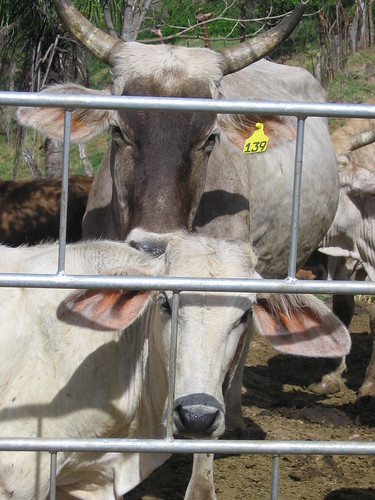
After a arriving in San Jose, Rod and I set off in very tiny, and very tightly packed, rental car for the beach. The roads in Costa Rica aren´t named or labeled. You just have to hope you see a sign with the next village´s name on it and head that way, or ask people from village to village. Needless to say we got lost.
After hours of diving, and a 1.5 hr wait on a dirt road for some road repair to get finished, Rod and I were hungry, irritable, and still hours from the beach. As proof that miracles do happen, we came around a curve in the road and saw a small sign for a hotel. We drove in and found ourselves greeted by two very friendly American owners (Jill and Bob) who not only had a room available, but said that dinner is just about to be served! Hurray! Turns out, Jill is an herbalist, healer, and great jazz vocalist, and Bob is retired from the music industry. Among the other guests was a old time jazz guitarist from New Orleans, and a superb clarinet player. Feeling better after the meal, Rod and I enjoyed some great live jazz from the sofa! Hurray! With morning yoga on the sundeck, an excellent breakfast, and some directions from Bob, Rod and I headed out again seeking the beach. Yup, I like Costa Rica so far!
(The hotel is AmaTierra Hotel and Retreat http://www.amatierra.com/index.html)
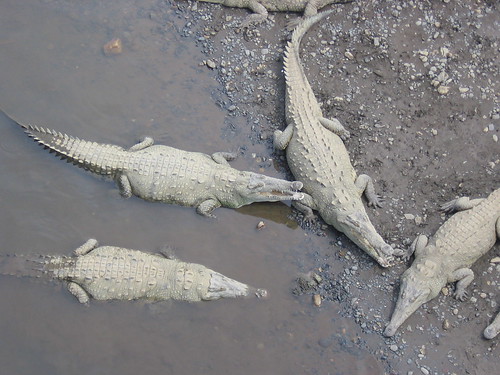 We made it to Jaco, a busy beach town on the Pacific side. Here we spent two days and enjoyed the beach, surfing, and crocodile viewing. On our way back into the central valley we took a short hike through the lush jungle and saw monkeys, lots of birds, crocodiles, and other funky looking lizards. We then headed up in elevation to the town of Cartago, intending to get a early start up Volcan Irazu the next morning.
We made it to Jaco, a busy beach town on the Pacific side. Here we spent two days and enjoyed the beach, surfing, and crocodile viewing. On our way back into the central valley we took a short hike through the lush jungle and saw monkeys, lots of birds, crocodiles, and other funky looking lizards. We then headed up in elevation to the town of Cartago, intending to get a early start up Volcan Irazu the next morning.
Volcan Irazu (3402 m, 11,260 ft)-
The name Irazu (or Iztaru) is derived from the Huatare Indian language and means "a thunder", or "the place which trembles". This mountain was a sacred center point for pre-Colombian native peoples, and is today also cloaked in stories of UFO sightings and an alien subterranean facility (The Costa Rican Shasta!). Irazu, is the home of Thunder.
At the summit are three overlapping craters, whose lunar landscape contrasts starkly with the thick foliage of the mountainsides. It is sort of an alien space.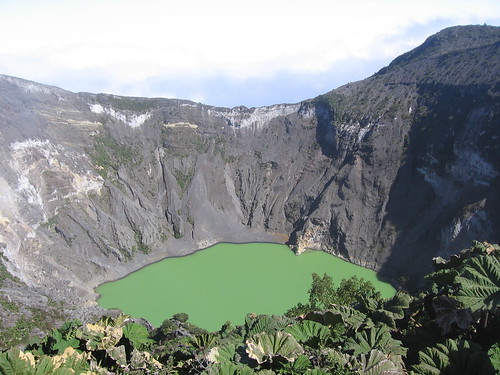 The main crater is 300 m deep and 1050 m across, with the oddest olive-green-glow-in-the-dark color lake at the bottom. The volcano is still active, with the last major eruption in 1963. It covered Cartago and San Jose in a thick layer of ash. Today Irazu is in a National Park, and has a road up to the craters and a little cafe near the summit (now that´s mountaineering!).
The main crater is 300 m deep and 1050 m across, with the oddest olive-green-glow-in-the-dark color lake at the bottom. The volcano is still active, with the last major eruption in 1963. It covered Cartago and San Jose in a thick layer of ash. Today Irazu is in a National Park, and has a road up to the craters and a little cafe near the summit (now that´s mountaineering!).
Because of the daily ritual of a clear morning atop the mountain, then clouds encasing everything around 10:00 am, we started out early. The slopes of Irazu are very fertile, and the road up passes through fields of coffee, potato, chayote (a vegetable), onions, and cow pasture. While passing through the little farming villages you might get stopped to allow some cows to cross, or see a man walking a horse loaded with fresh milk jugs. The crisp clear morning sunshine made the place magical.
When we got to the National Park entrance at 7:20, of course the gate was locked (opens at 8:00).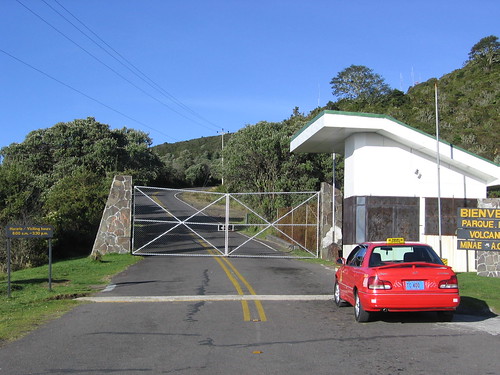 We thought we would just walk around the gate and up to the summit, but there was no way through the barbed wire and trenches that surrounded the gate! They are serious about getting their National Park fee. At 8, we drove up to the end of the road and walked to the summit. It is said that on a clear day, the top of Irazu is the only place in the world where you can see the Pacific and Atlantic ocean (Caribbean sea) at the same time. We could see the Pacific, but the area below us to the east was covered with clouds. We made an offering to Thunder on the summit, then walked into the craters. We had great sunny views, but could see the clouds rising up the southeast side of the mountain and spilling into the craters as we stood there. Like clock work, at about 10:00 am, the whole place was in the clouds.
We thought we would just walk around the gate and up to the summit, but there was no way through the barbed wire and trenches that surrounded the gate! They are serious about getting their National Park fee. At 8, we drove up to the end of the road and walked to the summit. It is said that on a clear day, the top of Irazu is the only place in the world where you can see the Pacific and Atlantic ocean (Caribbean sea) at the same time. We could see the Pacific, but the area below us to the east was covered with clouds. We made an offering to Thunder on the summit, then walked into the craters. We had great sunny views, but could see the clouds rising up the southeast side of the mountain and spilling into the craters as we stood there. Like clock work, at about 10:00 am, the whole place was in the clouds.
With more than half the day left, Rod and I drove for lunch to the Orosi Valley. The river flowing down the center of the valley is lined on both sides with rows of coffee plants under a thin overstory of trees. Like a tropical coffee Napa! The lush and colorful mountain sides surrounding the valley had terraced banana plantations, and trees with a full canopy of bright orange leaves. We drank some excellent coffee, and then... we drank some more.
In the afternoon, we drove through the cloud forest over the Cerro de la Muerte to a very pleasant little jungle mountain town along the Rio Blanco, and at the foot of Costa Rica´s tallest mountain, Cerro Chirripo (3819 m). The next morning we took a sweaty hike up through the jungle. We didn´t see much wildlife (except big ear cows).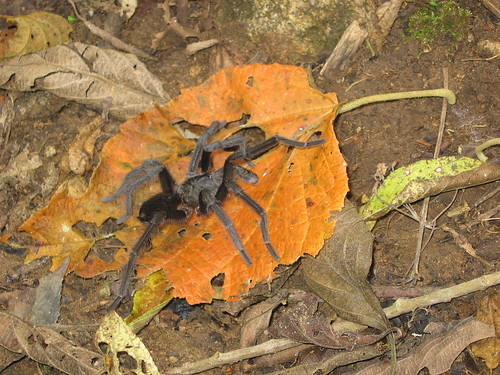 And just when we were making jokes about the homicidal psycho jungle tigers stalking us, and other wildlife we were not seeing, I almost stepped on the biggest, blackest, tarantula-est crossing the trail. All the tingles behind the ears! After that we took our romp through the jungle a lot more seriously.
And just when we were making jokes about the homicidal psycho jungle tigers stalking us, and other wildlife we were not seeing, I almost stepped on the biggest, blackest, tarantula-est crossing the trail. All the tingles behind the ears! After that we took our romp through the jungle a lot more seriously.
Done with the hike, we hit the local hot spring for a dip before heading back to the beautiful lazy Orosi Vally. The next day, with a serious coffee buzz, it was back to San Jose to fly out the following day. Asta luego! Love ya Costa Rica!
Costa Rica
Green canopies, beans and rice, jungle, volcanoes, cloud forest, crocodiles, humid, black sand, big eared cows, coffee, more coffee. Our time in Costa Rica was full of all these things, and was a great resting period before the big peaks of South America.

After a arriving in San Jose, Rod and I set off in very tiny, and very tightly packed, rental car for the beach. The roads in Costa Rica aren´t named or labeled. You just have to hope you see a sign with the next village´s name on it and head that way, or ask people from village to village. Needless to say we got lost.
After hours of diving, and a 1.5 hr wait on a dirt road for some road repair to get finished, Rod and I were hungry, irritable, and still hours from the beach. As proof that miracles do happen, we came around a curve in the road and saw a small sign for a hotel. We drove in and found ourselves greeted by two very friendly American owners (Jill and Bob) who not only had a room available, but said that dinner is just about to be served! Hurray! Turns out, Jill is an herbalist, healer, and great jazz vocalist, and Bob is retired from the music industry. Among the other guests was a old time jazz guitarist from New Orleans, and a superb clarinet player. Feeling better after the meal, Rod and I enjoyed some great live jazz from the sofa! Hurray! With morning yoga on the sundeck, an excellent breakfast, and some directions from Bob, Rod and I headed out again seeking the beach. Yup, I like Costa Rica so far!
(The hotel is AmaTierra Hotel and Retreat http://www.amatierra.com/index.html)
 We made it to Jaco, a busy beach town on the Pacific side. Here we spent two days and enjoyed the beach, surfing, and crocodile viewing. On our way back into the central valley we took a short hike through the lush jungle and saw monkeys, lots of birds, crocodiles, and other funky looking lizards. We then headed up in elevation to the town of Cartago, intending to get a early start up Volcan Irazu the next morning.
We made it to Jaco, a busy beach town on the Pacific side. Here we spent two days and enjoyed the beach, surfing, and crocodile viewing. On our way back into the central valley we took a short hike through the lush jungle and saw monkeys, lots of birds, crocodiles, and other funky looking lizards. We then headed up in elevation to the town of Cartago, intending to get a early start up Volcan Irazu the next morning.Volcan Irazu (3402 m, 11,260 ft)-
The name Irazu (or Iztaru) is derived from the Huatare Indian language and means "a thunder", or "the place which trembles". This mountain was a sacred center point for pre-Colombian native peoples, and is today also cloaked in stories of UFO sightings and an alien subterranean facility (The Costa Rican Shasta!). Irazu, is the home of Thunder.
At the summit are three overlapping craters, whose lunar landscape contrasts starkly with the thick foliage of the mountainsides. It is sort of an alien space.
 The main crater is 300 m deep and 1050 m across, with the oddest olive-green-glow-in-the-dark color lake at the bottom. The volcano is still active, with the last major eruption in 1963. It covered Cartago and San Jose in a thick layer of ash. Today Irazu is in a National Park, and has a road up to the craters and a little cafe near the summit (now that´s mountaineering!).
The main crater is 300 m deep and 1050 m across, with the oddest olive-green-glow-in-the-dark color lake at the bottom. The volcano is still active, with the last major eruption in 1963. It covered Cartago and San Jose in a thick layer of ash. Today Irazu is in a National Park, and has a road up to the craters and a little cafe near the summit (now that´s mountaineering!).Because of the daily ritual of a clear morning atop the mountain, then clouds encasing everything around 10:00 am, we started out early. The slopes of Irazu are very fertile, and the road up passes through fields of coffee, potato, chayote (a vegetable), onions, and cow pasture. While passing through the little farming villages you might get stopped to allow some cows to cross, or see a man walking a horse loaded with fresh milk jugs. The crisp clear morning sunshine made the place magical.
When we got to the National Park entrance at 7:20, of course the gate was locked (opens at 8:00).
 We thought we would just walk around the gate and up to the summit, but there was no way through the barbed wire and trenches that surrounded the gate! They are serious about getting their National Park fee. At 8, we drove up to the end of the road and walked to the summit. It is said that on a clear day, the top of Irazu is the only place in the world where you can see the Pacific and Atlantic ocean (Caribbean sea) at the same time. We could see the Pacific, but the area below us to the east was covered with clouds. We made an offering to Thunder on the summit, then walked into the craters. We had great sunny views, but could see the clouds rising up the southeast side of the mountain and spilling into the craters as we stood there. Like clock work, at about 10:00 am, the whole place was in the clouds.
We thought we would just walk around the gate and up to the summit, but there was no way through the barbed wire and trenches that surrounded the gate! They are serious about getting their National Park fee. At 8, we drove up to the end of the road and walked to the summit. It is said that on a clear day, the top of Irazu is the only place in the world where you can see the Pacific and Atlantic ocean (Caribbean sea) at the same time. We could see the Pacific, but the area below us to the east was covered with clouds. We made an offering to Thunder on the summit, then walked into the craters. We had great sunny views, but could see the clouds rising up the southeast side of the mountain and spilling into the craters as we stood there. Like clock work, at about 10:00 am, the whole place was in the clouds.With more than half the day left, Rod and I drove for lunch to the Orosi Valley. The river flowing down the center of the valley is lined on both sides with rows of coffee plants under a thin overstory of trees. Like a tropical coffee Napa! The lush and colorful mountain sides surrounding the valley had terraced banana plantations, and trees with a full canopy of bright orange leaves. We drank some excellent coffee, and then... we drank some more.
In the afternoon, we drove through the cloud forest over the Cerro de la Muerte to a very pleasant little jungle mountain town along the Rio Blanco, and at the foot of Costa Rica´s tallest mountain, Cerro Chirripo (3819 m). The next morning we took a sweaty hike up through the jungle. We didn´t see much wildlife (except big ear cows).
 And just when we were making jokes about the homicidal psycho jungle tigers stalking us, and other wildlife we were not seeing, I almost stepped on the biggest, blackest, tarantula-est crossing the trail. All the tingles behind the ears! After that we took our romp through the jungle a lot more seriously.
And just when we were making jokes about the homicidal psycho jungle tigers stalking us, and other wildlife we were not seeing, I almost stepped on the biggest, blackest, tarantula-est crossing the trail. All the tingles behind the ears! After that we took our romp through the jungle a lot more seriously.Done with the hike, we hit the local hot spring for a dip before heading back to the beautiful lazy Orosi Vally. The next day, with a serious coffee buzz, it was back to San Jose to fly out the following day. Asta luego! Love ya Costa Rica!
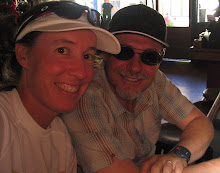
1 comment:
Costa Rica is a country with an extremely sense of freedom. The landscapes are for many people the greenest in whole center America. The chances of investments are very high; the average of Americans, European and people of the entire planet who are buying here is up in the sky!!! Great investment opportunity in Costa Rica lots in costa rica
Post a Comment